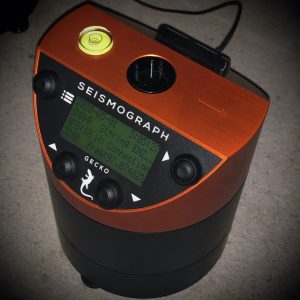
The Seismology Research Centre (SRC) division of ESS Earth Sciences has had a big year in 2016. SRC is celebrating its 40th anniversary since local earthquake monitoring began in 1976; and in the development and release of several new and improved products, the latest being the Gecko Prism broadband seismograph.
The Gecko Prism, an acronym for Portable Rugged Interferometry SeisMograph, is the result of 18 months of testing of a new compact sensor technology that uses laser optics and interferometry to detect nano-g levels of motion. It is particularly sensitive to low frequencies (periods as long as 200 seconds) and very high frequencies (to 1500Hz). While maintaining a high clip level, giving a huge dynamic range of motion.

By recording acceleration at high resolution, a wider range of motion can be detected than a velocity sensor can manage, much like velocity sensors were able to detect a wider range and higher resolution of motion than the original displacement seismographs like that developed by John Milne, one of which was installed in Melbourne, Australia, the home of the SRC.
As most users are familiar with broadband velocity sensors, velocity output is now available in the Prism. The acceleration output from the sensors uses hardware integration to output velocity, with two variants available: the medium period Prism-MP with a flat velocity frequency response from 40 seconds to 90Hz; and the long period Prism-LP with 120 seconds to 60Hz bandwidth.
Omnidirectional optical sensors are also used in the ±2g clip level SMA-HR accelerograph with 200s to 800Hz bandwidth, and a budget short period Prism-SP with 10 second to 150Hz response velocity output.



